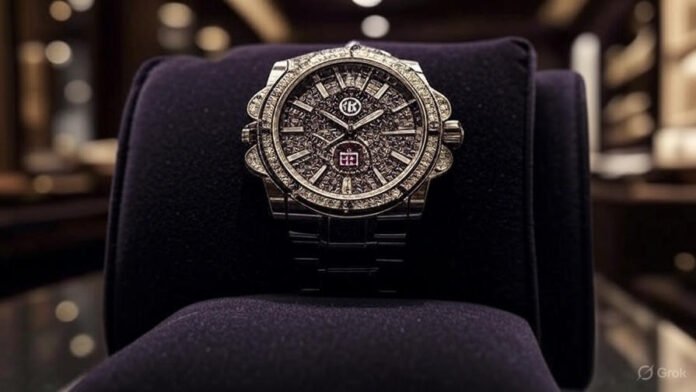The global watch industry, valued at over $70 billion in 2024, has long been a symbol of craftsmanship, luxury, and status. However, alongside the prestigious brands like Rolex, Omega, and Patek Philippe, a parallel market for replica watches has surged, drawing attention from consumers, regulators, and law enforcement alike. These imitation timepieces, often sold at a fraction of the cost of their authentic counterparts, have sparked debates about legality, ethics, and economic impact. As the market for these replicas grows, so too does the scrutiny from authorities and luxury brands aiming to protect their intellectual property.
A Booming Underground Market
Replica watches, often referred to as “homage” or “counterfeit” watches depending on their intent, are designed to mimic the appearance and functionality of high-end timepieces. While some replicas are blatant forgeries, complete with fake brand logos, others are marketed as affordable alternatives that pay tribute to iconic designs without claiming authenticity. The rise of e-commerce and social media platforms has fueled this market, enabling sellers to reach global audiences with ease. For example, websites showcasing replica watches have become increasingly sophisticated, offering detailed product descriptions and high-quality images to attract buyers.
Recent estimates suggest that the counterfeit goods market, including replica watches, generates billions of dollars annually. A 2024 report by the International Chamber of Commerce indicated that counterfeit goods account for approximately 2.5% of global trade, with luxury watches being a significant contributor. The accessibility of these products, often sold through online marketplaces or discreet social media channels, has made them appealing to consumers who desire the aesthetic of a luxury watch without the hefty price tag.
“The demand for replica watches is driven by a combination of aspirational buyers and savvy collectors who appreciate the craftsmanship of well-made homages,” said Maria Delgado, a market analyst specializing in luxury goods. “However, the line between homage and counterfeit is blurry, and that’s where legal issues arise.”
Legal and Ethical Challenges
The production and sale of replica watches often infringe on intellectual property rights, including trademarks and design patents held by luxury watchmakers. Major brands have invested heavily in legal battles to combat counterfeiting, with companies like Rolex and Swatch Group leading efforts to shut down illicit operations. In 2024, U.S. Customs and Border Protection seized over $1.2 billion worth of counterfeit goods, including thousands of fake watches, at ports of entry.
Legally, the sale of counterfeit watches is prohibited in most countries, with penalties ranging from fines to imprisonment for manufacturers and distributors. However, enforcement remains challenging, particularly in regions where regulatory oversight is lax or where counterfeit goods are produced on a large scale. China, for instance, has been identified as a major hub for replica watch production, with sophisticated operations capable of producing near-identical copies of high-end timepieces.
Ethically, the debate is more nuanced. Some argue that replica watches democratize access to luxury aesthetics, allowing consumers with limited budgets to enjoy the look of a premium watch. Others contend that these replicas undermine the craftsmanship and heritage of authentic brands, potentially devaluing the market for genuine products. “When you buy a luxury watch, you’re not just paying for the materials but for the story, the innovation, and the artistry behind it,” said Julien Moreau, a watchmaker based in Geneva. “Replicas dilute that value.”
Technological Advancements in Replicas
One factor driving the popularity of replica watches is the increasing sophistication of their production. Modern replicas often feature high-quality materials, precise movements, and meticulous attention to detail, making them difficult to distinguish from authentic watches without expert inspection. Some manufacturers even use automatic movements and sapphire crystals, components typically found in mid-range luxury watches.
Advancements in 3D printing and computer-aided design have further elevated the quality of replicas, enabling producers to replicate intricate details like engravings and bezel textures. However, these advancements have also raised concerns among regulators, as the line between a legal homage and an illegal counterfeit becomes harder to discern.
In response, luxury brands have adopted anti-counterfeiting measures, such as micro-engravings, holograms, and blockchain-based authentication systems. For instance, in 2023, several Swiss watchmakers partnered with tech firms to implement digital certificates of authenticity, allowing buyers to verify the provenance of their timepieces. These innovations aim to protect consumers and maintain the integrity of the luxury watch market.
Consumer Trends and Market Impact
The rise of replica watches reflects broader trends in consumer behavior, particularly among younger demographics. Millennials and Gen Z, who prioritize experiences and affordability over traditional luxury, are increasingly drawn to replicas as a way to express style without breaking the bank. Social media influencers and watch enthusiasts have also played a role, often showcasing affordable alternatives alongside genuine luxury pieces.
However, the proliferation of replicas has economic implications for the luxury watch industry. Counterfeit goods can erode brand equity and lead to lost sales, particularly for entry-level luxury watches priced between $1,000 and $5,000. Some analysts argue that replicas may even serve as a gateway for consumers to eventually purchase authentic watches, but the immediate impact on brand revenue remains a concern.
Retailers of genuine watches are also feeling the pressure. Authorized dealers report increased skepticism from customers, who are wary of paying premium prices when high-quality replicas are readily available. To counter this, some brands have introduced more accessible product lines, such as entry-level models with simplified designs, to compete with the replica market.
Regulatory Crackdowns and Future Outlook
Governments and international organizations are stepping up efforts to curb the trade in counterfeit watches. In Europe, the European Union Intellectual Property Office (EUIPO) has launched campaigns to educate consumers about the risks of purchasing replicas, including potential links to organized crime and substandard product quality. Similarly, online marketplaces like Amazon and eBay have implemented stricter policies to remove listings for counterfeit goods, though enforcement remains inconsistent.
Looking ahead, the replica watch market is likely to remain a contentious issue. As production techniques continue to improve, distinguishing between genuine and imitation watches will require greater expertise and technological intervention. For consumers, the allure of affordable luxury will persist, but experts urge caution. “Buying a replica might seem like a bargain, but it often comes with hidden costs, from legal risks to poor durability,” said Delgado.
For the luxury watch industry, the challenge lies in balancing innovation with tradition while addressing the growing demand for affordability. Whether through legal action, technological advancements, or new marketing strategies, brands are determined to protect their legacy in an increasingly complex market.
Conclusion
The replica watch market represents a complex intersection of consumer desire, technological innovation, and legal challenges. While these imitation timepieces offer an accessible entry point into the world of luxury aesthetics, they pose significant risks to both consumers and the watch industry at large. From funding illicit activities to undermining the craftsmanship of authentic brands, the consequences of the replica trade extend far beyond a simple bargain. As regulatory bodies and luxury watchmakers intensify their efforts to combat counterfeiting, consumers are urged to weigh the true cost of their purchases. In a world where authenticity is increasingly valued, the future of the watch industry will depend on its ability to innovate, educate, and maintain the trust of its discerning clientele. The ticking of time will tell whether luxury brands can reclaim their narrative or if replicas will continue to cast a shadow over the industry’s legacy.









